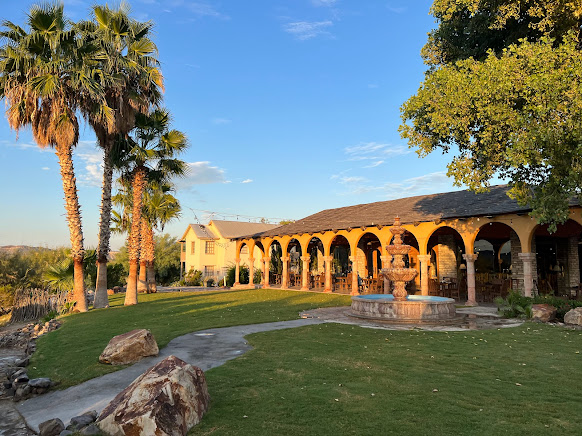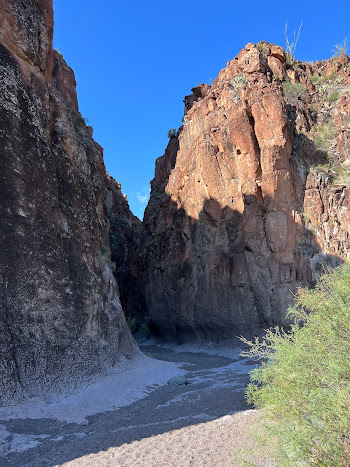October 10, 2022
Brother Bruce Sterling planned a family adventure trip to the recently established Big Bend Ranch State Park in 1997. Brother Scott had driven from Georgia and several other family members were ready to go the next day or so. Our planned entourage consisted of Bruce and Arleen Sterling, Dorothy and Gene Cavanaugh, Peggy and Sonny Miller, Fanny and Buddy Ross, Winfield and Pat Sterling, Scott and Joan Sterling, Ruth Sterling, and John and Linda Sterling. (Corrections appreciated). Then disaster! Bruce had been sick for several months before this planned trip, but he was still enthusiastic. He was hurt himself when he fell out of a tree. He lost a lot of weight and told brother John, "I should have got more help," when he realized that he had not taken the injury seriously. But this injury was not his primary health problem. A day or so before the planned trip to West Texas, we learned that Bruce could no longer remember how to use his computer, started making irrational comments and could no longer carry out intelligible conversation. Bruce was later diagnosed with terminal pancreatic cancer. The trip to the Big Bend was cancelled and Bruce died a few months later.
I assumed that someone else in the family might re-organize the trip and we might do it in Bruce’s memory at some later date. But, it never happened.
However,
on one of our trips in Mexico, Pat and I had crossed the border from
Mexico into the United States at Presidio,Texas, then drove the river
road through the Big Bend State Park, and got our first view. But we
could not stop at the various campgrounds and special sites because we
had not purchased a Park pass — so stopping in the park was illegal.
Anyway, we were tired and a little anxious to get home after spending
several weeks in Mexico, so we spent little time in the park. Again, in
2014 we traveled rapidly over the River Road on our way into Mexico to
visit Peguis Canyon on the Conchos River, stopping rarely. On both
trips, we were amazed with this wonderful road and all it’s scenic
beauty as it follows the Rio Grande River and canyons east from Presidio
into the town of Lajitas and then into Big Bend National Park. It was
enough to give us a taste and triggered a desire to return again someday
and explore in greater detail.
Bruce died in July, 1997 so it
has been 25 years ago that our planned trip was cancelled. Recently, I
thought maybe it was time to plan another trip to this Big Bend Country —
partially in memory of Brother Bruce and to spark our memories. So,
Pat and I and our dog, Tiger made the trip last week (October 1 thru
October 7). We thought of how nice it would be organize another family
group to go with us, but the weather forcast indicated that the park
would experience mild temperatures for the next week -- so, as we often
do -- we cranked up our motor-home, rounded up our little dog, and took
off -- with little notice.
Big Bend State Park
This
is the largest State Park in Texas -- all 311,000 acres of it. Located
in the Chihuahua Desert, it is a hot, dry but beautiful place. The Rio
Grande River forms the southern boundary of the park and runs through
the Colorado Canyon. The scenic, paved Texas Highway 170 also follows
the course of the river, providing access to several boondock (no
electricity or water) camping sites, scenic views, trail-heads, a rest
stop, canoe and raft put-in sites, and gravel road connections into the
interior of the park. National Geographic once claimed that it is one
of the 10 most scenic drives in the United States. I remember that
Uncle Steven Heacock, who worked for the Texas Highway Department,
recommended it very highly about 40 years ago or so.
 |
| Colorado Canyon |
Our trip took 6 days and only 1.5 days were actually spent in the park. We drove at a leisurely pace through most of the trip out and back from Bryan, TX. After a night in the Lost Alaska RV Park in Alpine, we drove the very scenic 95 mile route on Highway 118 through lush grasslands to Lajitas, Texas. The Lajitas Golf Resort is a posh establishment which Bruce would likely have chosen for our first night before starting to explore the Big Bend State Park. We stayed at the Maverick RV Park which is a part of the Resort.
 |
| Lajitas Golf Resort |
 | ||
| Golf Resort | |
After breakfast of eggs, green salsa, and guacamole, we started our explorations along the river road.
 | |
| Candililla Restaurant at the Golf Resort |
As we started up the River Road leaving Lajitas, a pulloff allowed us to see the muddy Rio Grande River and a distant view of Lajitas. Recent rains caused this river to run much higher than we are accustomed to seeing it. Good news for farmers and towns below Amistad Dam.
 |
| Rio Grande River and Lajitas |
 | |
| River View at Grassy Banks Campground | |
This sign explains that a couple movies have been made in this area, including "Streets of Laredo" which was filmed in 1995 and "Fandango" in 1985.
 |
Movies and Pictographs
One of the most interesting sites on this trip is the area around this hill. The Spanish name is Cuesta (steep hill).
 |
| Rest stop with tepees |
 |
| Cuesta and 15% Grade Downhill |
 |
| Pat searching for Bighorn Sheep that have been reintroduced into the Park. We observed three of them high on the cliff. |
 |
| Hoodos against the blue sky |
 |
| Hoodos Trailhead |
 |
| Closed Canyon. Tiger (our dog) and I hiked this shady canyon where he had a refreshing drink from a pool of water. |
 | |
| Fort Leaton | |
No
tour of this river road would be complete without a stop at Fort
Leaton. It was first built in 1848 and served as a trading post until
it was abandoned about 1925. It now serves as a museum and State Park
office where a pass into the park can be purchased.
Presidio
Neither Presidio or Lajitas are officially part of Big Bend Ranch State Park, but they constitute the private beginning and end of the River Road. Presidio is considered one of the oldest towns in the United States as it was first established in 1582 by Antonio de Espego -- when he headed the first wagon train across the river. Here, at the confluence of the Rio Grande and Concho Rivers, Presidio was born. It is claimed that there has been a settlement here for the last 10,000 years. The Comanche Indian Trail passed through this area to raid Mexican towns.
 |
| Comanche War Trails |
 |
Comanche Warriors
Also,
several roads through Texas passed through this area to supply silver
mines in Chihuahua, Mexico and to haul the silver back into Texas. The
Spanish mine owners also raided into Texas to capture local Indians to
use as slaves in their mines.
 | |
| Maybe, much of the history of this Big Bend area can be summarized by this mural by Tom Lea that can be found in the El Paso, County Courthouse. |
Previous Trip to Big Bend
The
trip to the Big Bend area was not the first one that Bruce planned.
Several of us rafted through the Santa Elena Canyon when the river was
very low in 1994. Left to right: Bruce, Arleen, Pat, Oarsman?, Gene,
Scott, ?, Dorothy, Sonny, Peggy and ?.
 |
| Rafting the Rio Grande in Santa Elena Canyon |
 |
| Dorothy Waving and Bruce in Front |
Summary
I am so sorry that we never experienced this park as we would have if Bruce's family reunion had materialized. I realize that my chronicle is a poor substitute for the memories we would have shared if our reunion had it not failed. But, I hope the memories shared here are worth remembering.
Table of Contents: https://www.blogger.com/blog/post/edit/6813612681836200616/3382423676443906063?hl=en











